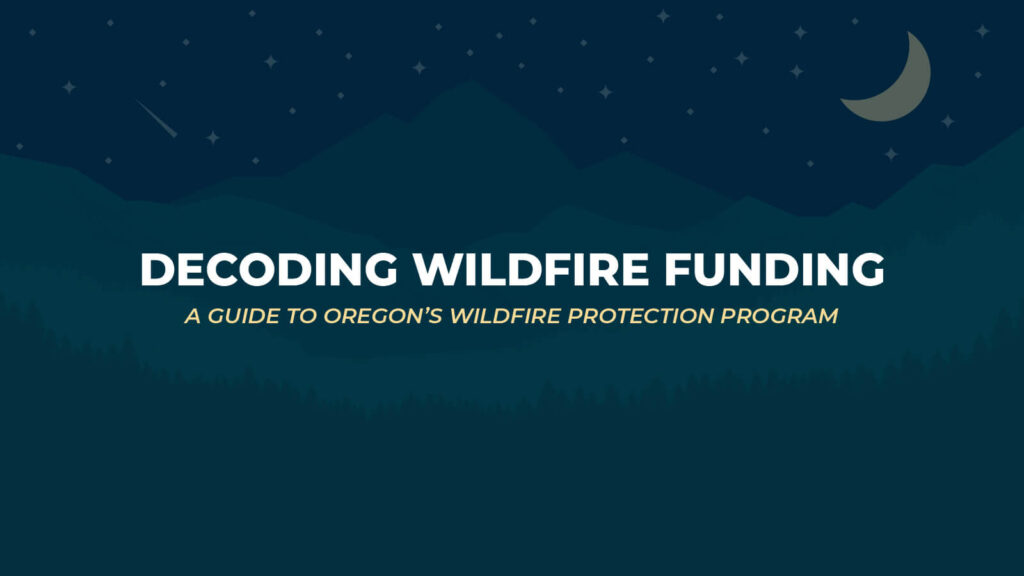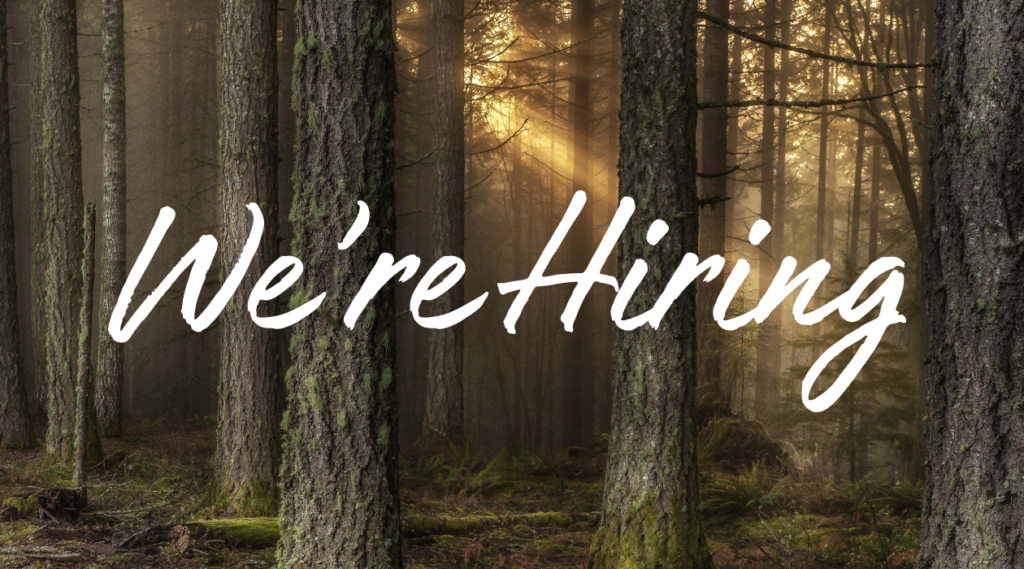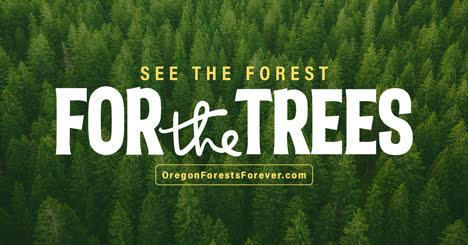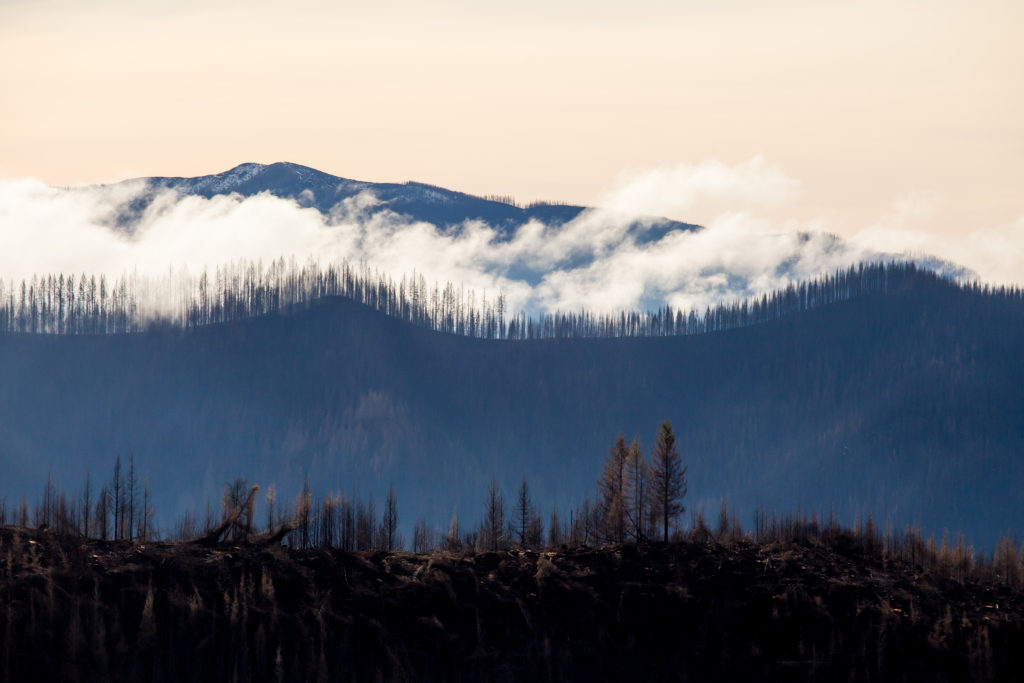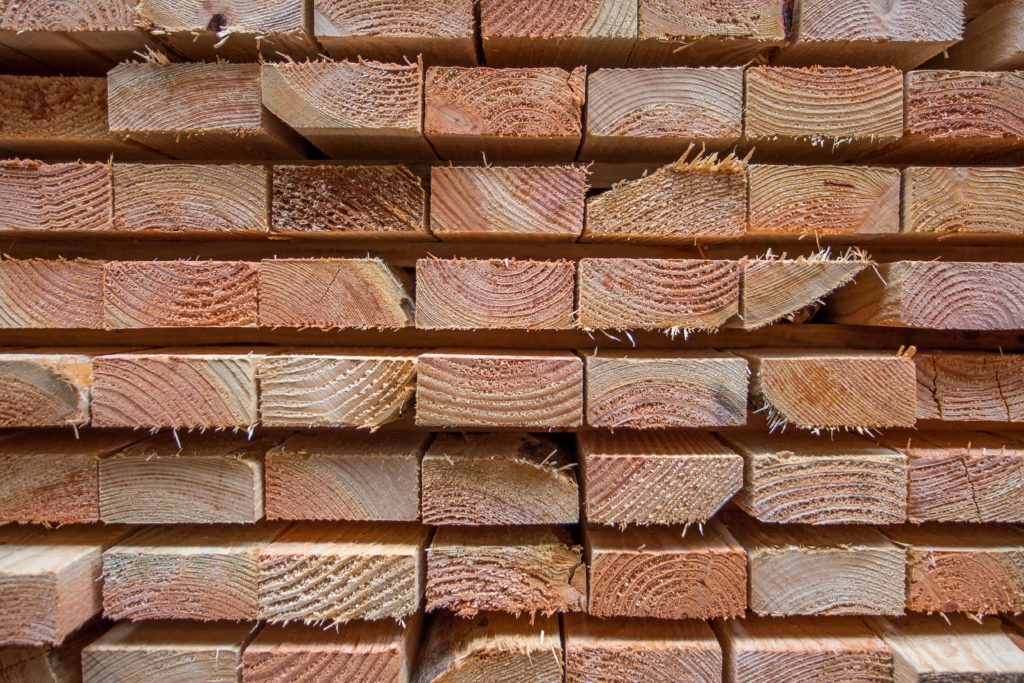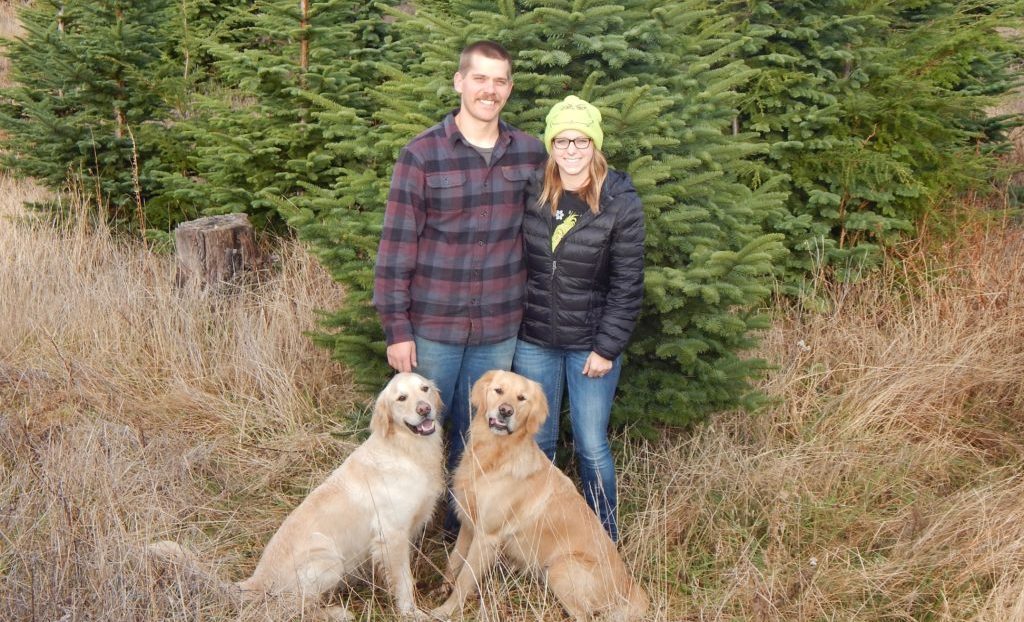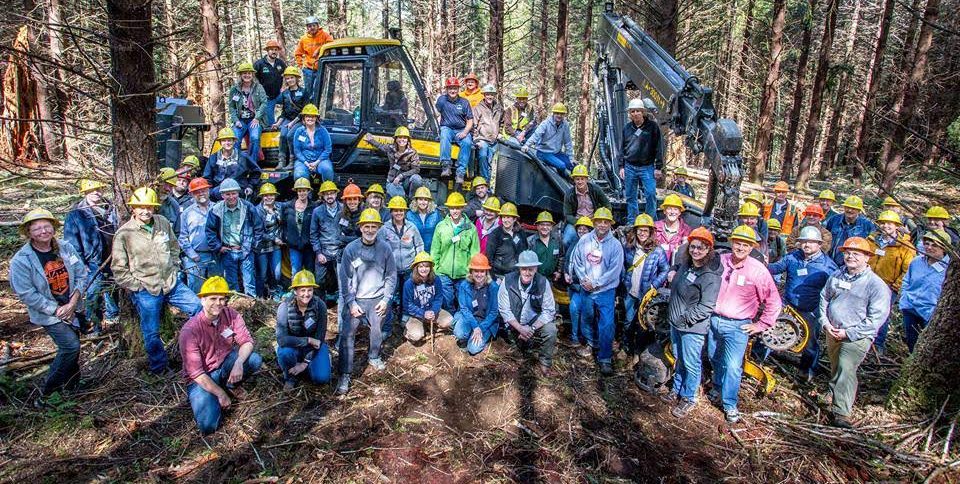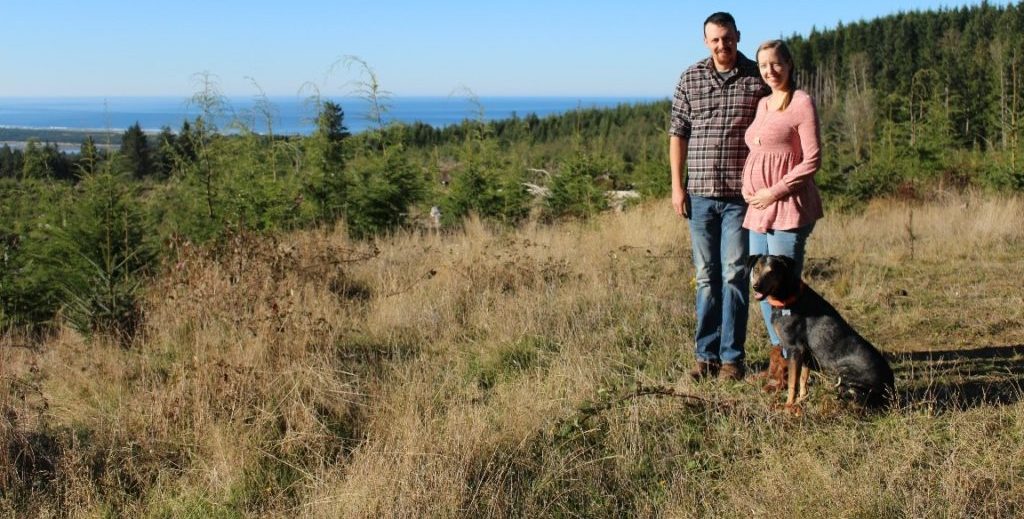In an effort to help policymakers better understand Oregon’s wildfire funding system, today OFIC launched a new explanatory section of its website dedicated to wildfire funding and the current funding crisis. Check it out here!
Director of Forest Protection
OFIC is currently recruiting for a Director of Forest Protection. Please see this link for a full job description.
All interested applicants are encouraged to send a cover letter, resume and references to Chris@ofic.com no later than the end of the day, Thursday April 18. Interviews will be conducted soon thereafter, with a goal of filling the position by early May.
OFIC Launches New Public-Facing Campaign
On June 6, 2022 OFIC launched the start of a long-term initiative called For the Trees that showcases Oregon’s timber industry as part of the solution to the social, economic and environmental issues Oregonians care about most. The forest products sector in Oregon is undeniably part of the solution to climate change, catastrophic wildfire prevention, affordable housing, and a healthy environment, and economic opportunity for families throughout Oregon – and this campaign illustrates that.
Oregon is changing and population growth has left many Oregonians with a lack of awareness about the timber industry. For the Trees re-introduces Oregonians to one of Oregon’s flagship industries and celebrates the timber industry’s important story about being part of Oregon’s past and future.
Recently, the timber industry and environmental groups reached a historic agreement that resulted in the most comprehensive changes to Oregon’s forestry regulations in fifty years, which demonstrates how opposing sides can work together on viable solutions to some of the toughest problems facing Oregonians today. It is this spirit of collaboration that the For the Trees campaign celebrates.
Private Forest Accord Update
In the February 2022 legislative session, Oregon legislators will be asked to codify in state law a comprehensive set of changes to the Oregon Forest Practices Act. The set of changes resulted from more than a year of scientific review and negotiations between private forestry representatives, small forestland owners, and environmental groups, known as the Private Forest Accord.
For current information on the Private Forest Accord, please click here.
Q&A with Roseburg: Post-fire Restoration
**This post originally appeared on Oregon Forests Forever
It’s been almost a year since the 2020 Labor Day fires torched over a million acres in Oregon, and now we’re in the midst of another summer and another potentially destructive fire season. Even before June 2021 was over, we saw three times more fires start and three times more acres burned in Oregon than is normal for that time of year.
Every corner of Oregon is suffering drought. Any rain we’ve seen has been spotty, and really only helpful west of the Cascades.
As we’re deep into another fire season, we thought we’d check in with Charley Moyer, District Forester, and Jason Colter, Senior Forester at Roseburg Forest Products to find out what they’ve been doing in areas of private forests that were burned to make sure they don’t re-burn this fire season.
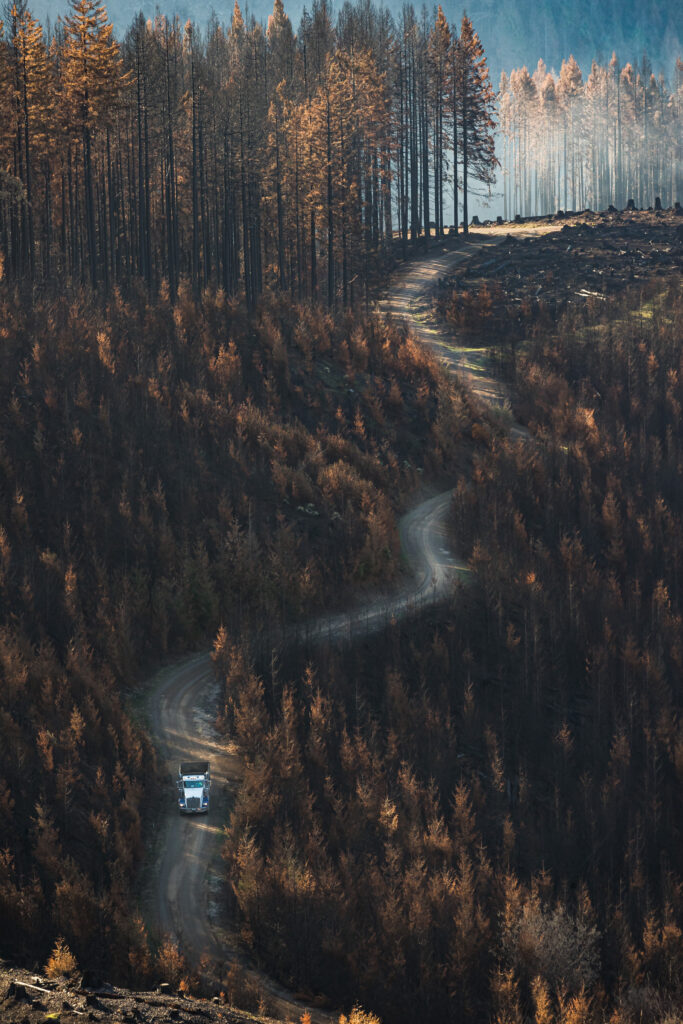
1. How many acres of Roseburg forestlands burned or were affected by large fires?
Roseburg is no stranger to fires: since 2013, we’ve had well over 48,000 acres of our timberlands severely impacted by five large fires.
2. What does Roseburg do after a large fire?
Our planning for rehabilitation starts as soon as we start to grasp the fire impacts – often, while still fighting the fire! Hazards, such as fallen trees, must be mitigated and all infrastructure evaluated for safety. Roads have to be cleared and culverts must often need to be replaced to ensure access.
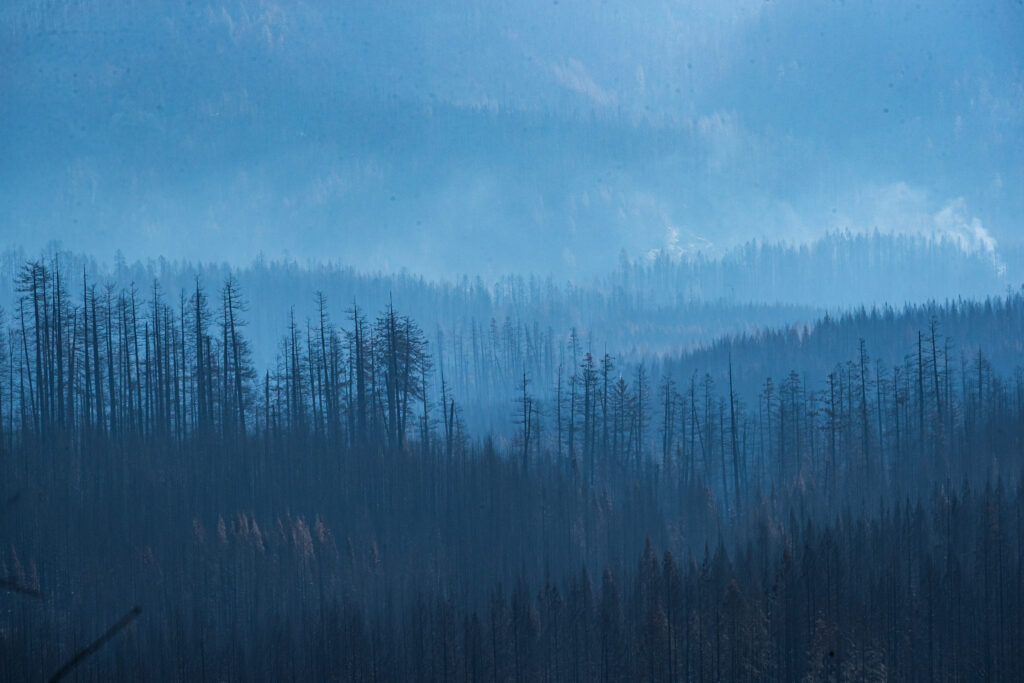
We then salvage the burned merchantable timber on our property and replant both salvaged areas as well as burned areas that could not be salvaged. Harvest of these standing dead trees and reforestation is vital for quick stabilization of soil, protection of clean water, and restoration of vital habitat for fish and wildlife for decades to come.
Reforestation also re-starts the clock on carbon sequestration; leaving standing dead timber is not a climate solution, as the burned, dead wood emits CO2 when it breaks down or quickly releases vast quantities of carbon in a subsequent fire.
3. What about this summer – is there a chance those acres could burn again? What are you doing to prevent that?
Yes, burn scars are extremely susceptible to burning again. The Tillamook Burn is a great example of this here in Oregon – it re-burned four times over an 18-year period! The Archie Creek Fire (2020), for example, re-burned over the North Umpqua/Fall Creek Fires (2017), the Cable Crossing Fire (2015), the Williams Creek Fire (2009), and the Apple Fire (2002). Currently, the Jack Fire (2021) is burning in the fire scars of the Happy Dog Fire (2017), Limpy Fire (2002), Apple Fire (2002), Calf 2 Fire (2002), Spring Fire (1996), Apple Fire (1987), and Jack Point Fire (1987). [Source]
Removal of the standing dead trees takes fuels out of the equation, should a fire start in the area again. Snags can also pose hazards to forest workers or firefighters. Re-establishing a young, vibrant forest is most effective in preventing a re-burn.
The Oxbow Fire of 1966 is a great example of perhaps the only large fire in the last 100+ years that has not re-burned. Most of Roseburg’s lands in western Oregon are “checkerboarded” with public lands, and after the 42,000+ acre Oxbow Fire had been stopped, both sides of the property lines, federal and private alike, were promptly salvaged and reforested. These management activities reduced the remaining fuels and quickly re-established forests, which has resulted in no major re-burn of this area since that fire in 1966. While salvage removes future hazards like snags, reforestation that fully restocks the forests with native species provides long-term shading (much quicker than natural regeneration after fires) which increases moisture retention and helps reduce highly flammable brush. All fires within the original burn area have been extinguished at a small size and without the worry of fuel loading or hazards from standing dead timber.
Based on notes recorded by previous foresters of this era, the aggressive salvage of both the private and public lands on the Oxbow Fire was a decision based on the history of the Tillamook Fires; it was an intentional long-term fuel reduction project. [Bob Zybach is a great source for West Oregon fire history.]
4. Are burned forests still open to recreation?
While rehabilitating our lands, we close burned areas to public access for safety reasons. Recreating in burned areas is not a good idea – dead trees can fall at any time, hitting someone or blocking a road; un-stabilized soil can give way; and infrastructure that looks safe on the surface could have significant structural defects.
When rehabilitation is complete, we will communicate the change in recreation status via signs at main entry points such as gates, our website, and our social media channels; we close all of our lands to public access seasonally when the Industrial Fire Precaution Level (IFPL) reaches Level II. Recreation access information for our lands can be found here.
5. How do post-fire restoration efforts differ from standard forest practices? Do you still have to follow the same laws?
The Oregon Forest Practices Act allows for emergencies and recovery from disasters such as wildfire, storm damage, and insect outbreaks; ODF reviews planned operations to ensure compliance. The size of salvage harvest areas may be larger than typical to reflect the disaster’s impact and severity, as well as the need to salvage the dead trees in a timely manner to avoid wood degradation.
Reforestation of burned areas is only required by law if salvage harvests are conducted. Roseburg chooses to reforest non-salvaged lands for a variety of reasons such as long-term sustainability, resource protection, and our long-term vision for our land management goals.
6. What does a forest that’s had post-fire treatment look like 5 or even 10 years later compared to one that hasn’t had treatment?
In 2014, the Yellow Point Fire, an arson, was sparked within the footprint of the Oxbow Fire (1966) on our lands.
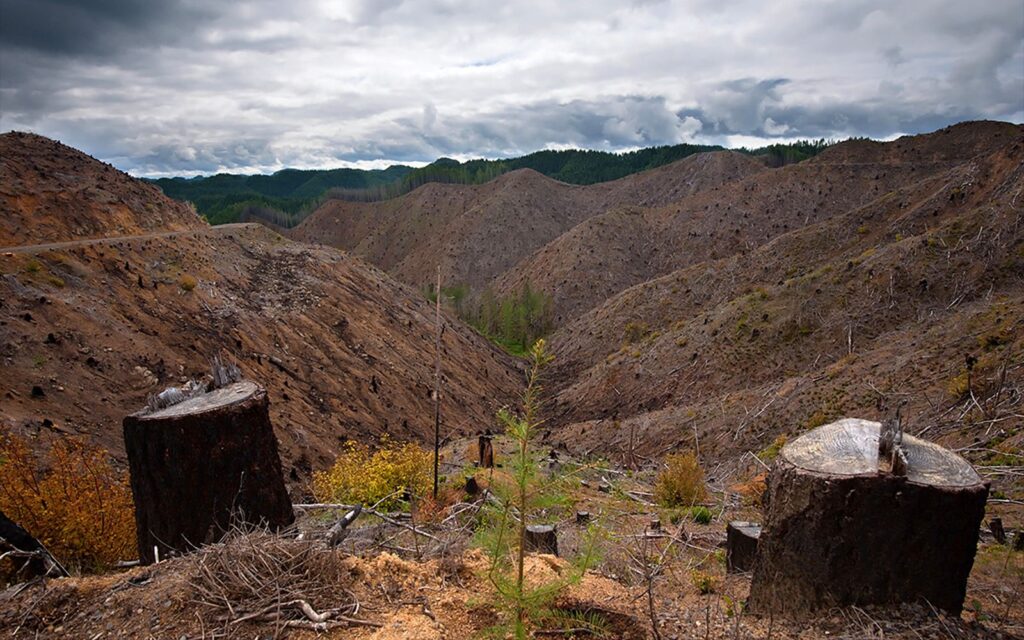
Due to the management practices after the Oxbow Fire, we were easily able to stop this fire at just 790 acres. We again managed our lands like before – salvage harvesting and reforesting as soon as possible. Reforestation establishes a healthy, vibrant forest quickly after disasters like this. Here is what it looks like today (2021)!
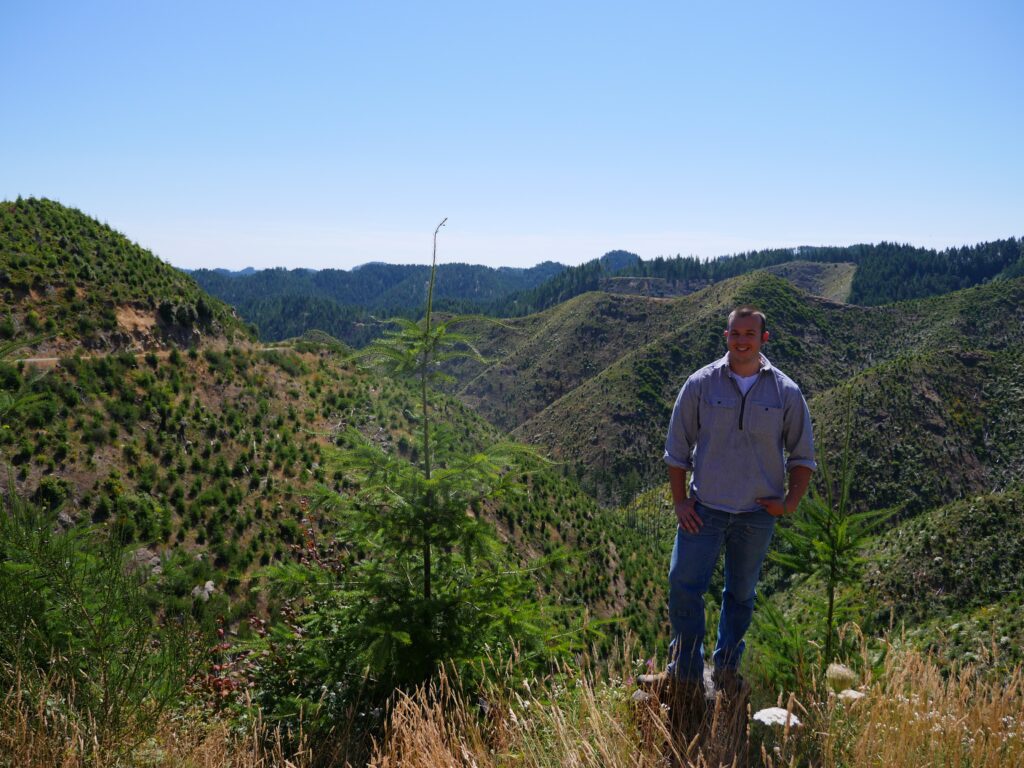
7. There’s a lot of misinformation out there about “salvage harvests.” What is a salvage harvest and how is that different than harvest of a healthy forest?
Salvage harvest is the removal of dead, dying, or deteriorating trees after an event such as wildfire or snow/ice/wind damage. These operations must occur before the wood deteriorates, and differ from “regular” harvests in that we typically do not plan to harvest these areas, and often at such a large scale. Sometimes these salvage operations harvest trees that are “green” and appear to still be alive; however, the damage to their foliage and roots means that they will die sooner than later. Also, some trees that do survive fires often don’t do well after their ‘neighbors’ die off or are salvaged, due to wind and sun exposure they’ve not been used to.
These salvage harvests are a long-term fuel reduction and insect management tool. While the fire is part of the natural ecosystem, the fire return interval is measured in hundreds of years in western Oregon, versus 10’s of years in eastern Oregon. The big game-changer is the amount of public-caused fires and climate change. Having more starts per year and generally drier conditions increases the potential for large fires.
8. Can the burned trees be used for lumber? What happens with them?
Yes! The fire killed the large trees, but as you can see in the pictures, the damage is mostly contained to the bark. This means that inside the bark, the wood is still solid and good for use.

But we do need to harvest the dead trees as quickly as possible – wood-boring beetles are attracted to the dead trees and can wreak havoc on wood quality. Also, once winter rains hit the year following the fire stain can set in and rot begins to occur.
Our burned logs get sent to our mills and utilized just like unburned logs.
Oregon Timber Tax Q&A with Todd Payne
**This post originally appeared on Oregon Forests Forever
The Oregon Legislature is currently considering increasing taxes paid by the timber industry, prompting many questions about the taxes the industry already pays. Todd Payne, President and CEO of Seneca Jones Timber Co., takes on the most commonly asked questions and sets the record straight. Seneca is one of Oregon’s oldest family-run forest products companies. Payne also serves as chairman of the Board of the Oregon Forest and Industries Council.
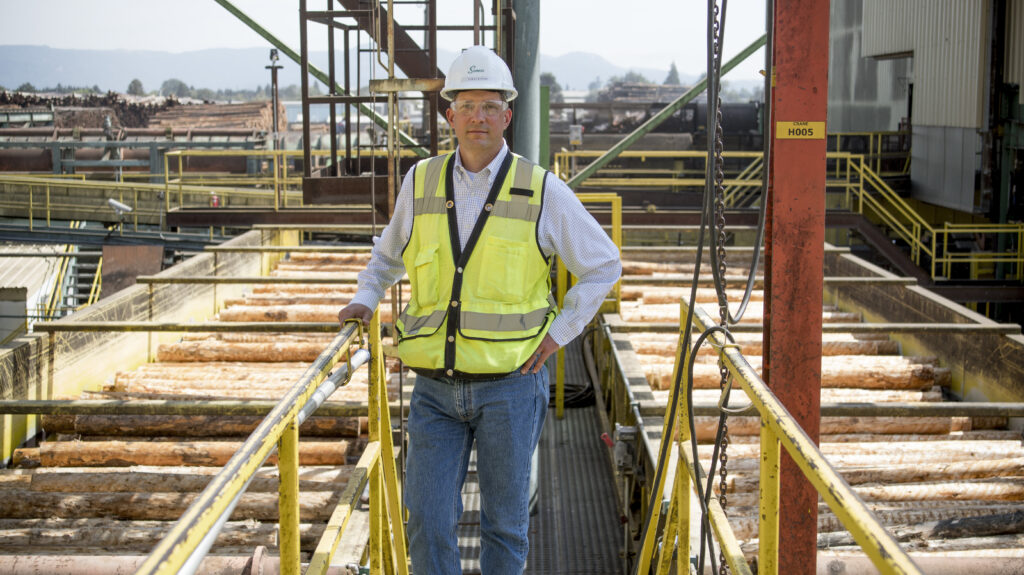
Q: Tell us about the new tax study that just came out from Ernst & Young – what were the primary findings?
A: On April 13 the Oregon Forest & Industries Council released a groundbreaking report from national accounting firm Ernst & Young detailing the total tax burden on the private forest sector in Oregon. The report’s primary finding concludes the Oregon forest sector pays more than one-and-a-half times more on average than other Oregon businesses. The report calculated the total tax burden by aggregating all taxes paid by the sector, including property taxes, income taxes, small tract forestland taxes, corporate income and excise taxes, fire assessments and privilege taxes. All told, in 2019 the forest sector contributed over $142 million to state tax coffers. This report unequivocally concludes our sector already pays more than its fair share in taxes and it vindicated our sense that additional tax increases under consideration are motivated more by philosophical differences about forest management than they are by any sense of tax equity.
Q: What does this tell you about legislation under consideration by the Legislature?
Given the report’s findings, we now know that legislation under consideration in the 2021 legislative session would effectively double the total taxes currently paid by the forest sector. That would increase the forest sector’s effective aggregate tax rate to nearly three times more than other Oregon businesses pay. At a time when the latest state revenue forecast indicates the Legislature has nearly $800 million more to work with this session than it originally thought and has billions of dollars in reserves, doubling the tax burden on the forest sector seems unnecessary.
Q: I read lumber prices are at record highs right now and multi-national corporations are making record profits. Why isn’t this an appropriate time to raise taxes on the industry?
A: Suggesting Oregon’s private forestland owners who just lost more than 400,000 acres to wildfire should be taxed because mills are realizing profits during a pandemic DIY home remodeling boom, is like suggesting potato farmers who just suffered a year of catastrophic blight should be taxed because Safeway is making money while more people are cooking at home.
The severance tax proposed by HB 2379 would not be paid by mills making short-term profits on high lumber prices driven by homeowner remodeling demands during stay-at-home orders. It would be paid by 65,000 private forestland owners in Oregon who just suffered through the worst wildfire season in recent history.
In addition, lumber prices are only one part of the equation. Log prices and lumber prices are often disconnected. Because one temporarily goes up does not mean the whole supply chain benefits. Taxes are permanent. Blips in short-run markets are not. This is a boom-and-bust market — what goes up must come down, and usually the low is lower than the high.
Finally – justifying a tax increase simply because an industry is “doing well” isn’t smart tax policy. The Legislature is not proposing to tax the recreation industry simply because those companies are making profits from people buying a lot of kayaks and home gym equipment during stay-at-home orders.
Q: No one ever wants their taxes to be increased. Isn’t it true that there will never be a “right time?”
A: Even if we weren’t in the middle of a pandemic, and we hadn’t just suffered the most catastrophic wildfire season in recent history, and the Legislature hadn’t increased the tax burden on businesses by 41% over the past few years – a severance tax is still the wrong policy decision. Aside from being a staggering 800% increase, severance taxes are for severed resources, such as coal and crude oil, not a crop that is planted and cultivated over time. State law requires harvested timber be replanted – on average four trees are planted for each one that is harvested.
Q: What taxes does the timber industry pay in Oregon?
A: The timber industry already pays a higher tax burden than other businesses in the state. The industry pays property taxes (on forestland at its real market value: as land primarily used to grown and harvest timber); income taxes; payroll taxes; the new Corporate Activity Tax and assessments for fire suppression. But that’s not all. The industry also pays a Forest Products Harvest Tax – a privilege tax imposed to support a timber commodity commission and three state-funded programs: the Forest Practices Act administration, Oregon State University’s Forest Research Lab and the Oregon Forestland Protection Fund.
Q: Washington has a severance tax and the industry operates profitably in that state. Why not levy the same tax in Oregon?
A: Washington also doesn’t have income taxes and Oregon does. Washington has a sales tax and Oregon doesn’t. These are apples to oranges comparisons that don’t take the entire tax system into consideration. The Legislature has already increased the tax burden on Oregon businesses by 41% over the past few years. Moreover, the timber industry already pays a higher tax burden than other businesses in the state – 1.5 times more than other Oregon business sectors, and we pay 3 times more for fire protection than Washington landowners.
Wood is essential to fighting coronavirus
Originally posted on Oregon Forests Forever
The coronavirus pandemic has demonstrated the critical importance of paper products, even giving toilet paper its 15 minutes of fame. One thing has been made clear – wood is a key material supporting a number of important goods and services.
Angel Soft executive Andrew Noble told CNBC Make It, “Friends and family who know I work in toilet paper never wanted to talk about that before.” But when customers started finding shelves empty of the product this March, “suddenly everyone wanted to talk about [toilet paper] all the time,” Noble said. “Even my own mother wanted to know if I had any toilet paper I could get her.”
The Albany Democrat-Herald reported that Georgia-Pacific’s 14 tissue paper plants across the U.S. are, on average, producing 1.5 million more rolls of toilet paper per day than they were before the pandemic began, according to senior director of public affairs and communications Kelly Ferguson.
On March 19 the U.S. Department of Homeland Security recognized that “Workers who support the manufacture and distribution of forest products, including, but not limited to timber, paper, and other wood products” are part of the country’s essential infrastructure necessary to continue normal operations during the COVID-19.
In addition to toilet paper, wood is necessary for critical infrastructure projects, including emergency medical and lodging structures, and temporary buildings. For example, the Scotsman reported wood manufacturers are supplying oriented strand board for construction of the Nightingale temporary hospital, being built in London. Wood is also used for pallets to keep food and medicines moving, and serves as packaging for those vital supplies. According to the Washington Forest Protection Association, some sawmills and pulp and paper facilities also serve as co-generation plants, burning wood waste, the byproduct of sawmilling, to produce renewable biomass electricity and steam. Not only does this electricity and steam power the mills themselves, it gets sold to the larger grid, helping to supply additional green power to the general public.
And, as Mark Doumit, executive director of the Washington Forest Protection Association pointed out in a Seattle Times opinion, “Raw logs and lumber, as well as the paper products needed for sanitation and hygiene, do not exist in isolated industries. The sector needs demand from lumber users – such as home construction – to support the harvest of timber necessary to keep our sawmills open and producing their essential materials. Likewise, the pulp and paper manufacturers rely on chips and other residual products from the sawmills to power their mills and produce paper and hygiene products. No one element of this supply chain exists in isolation from the others.”
The good news is much of the forest products sector already work in socially-distanced locations and will be able to continue working safely and responsibly.
Forestry utilizing the best science available
Originally posted on Oregon Forests Forever
Hello my name is Brent Long. I recreate, work, and source food/water from forests that are managed for timber production. The same forests also produce many forest externalities including clean air, clean water, different wildlife habitats, and recreation opportunities.
I, like many other Oregonians, head to the forest to recreate. My main recreation activity in the forest since 2017 has been running with my two dogs. We have run 1,016 miles on logging roads since 2017. In that time span the forests around the logging roads have been logged, sprayed with herbicides, and re-planted with a native tree species mix. During that same time span I have seen elk, deer, bear, coyotes, bobcats, rabbits, and many birds of prey all utilizing the different age classes that the forest provides. We see elk and deer in the recently harvested areas eating grass, forbs, and planted trees. When they notice us they run to the 8-20 year old forest stands for protection. The birds of prey sit on stumps and snags within the recent harvests and scan the area for mice and rabbits that may come out. From a distance these recent harvests appear as bare land, but I can personally attest to the amount of use these forests get. I typically don’t wear headphones while I run because I enjoy listening to the songs from all of the songbirds. Or I hear thumps from the woodpeckers that throw off my running cadence. Songbirds flock to the recently logged areas in search of insects. The insects are out breaking down woody material and give nutrients back to the soil.
In addition to recreating out in the forest, I also work there. My dad started out as a timber cutter and ended up working as a diesel mechanic later on. He would bring me to work with him occasionally to see all of the big equipment that the loggers used. That introduction to working in the forest got me hooked. After High school I attended Oregon State University in the Forest Management program. After college I went to work for a private timber company on the Oregon Coast, where I have been for over 7 years. Our activities in the forest are guided by the Oregon Forest Practices Act (OFPA). The OFPA utilizes the best science available in order to protect resources, and is constantly updated as research is done. Various studies have been done to test the effectiveness of the OFPA and affirm its current version. It is imperative that we use science and research when we talk about protecting resources. Any changes that are made need to be based on good data and not driven by anecdotal evidence. If we propose changes to the existing protection measures we should ask two questions. First is there a real issue that needs to be addressed? Secondly if there is an issue will the proposed protection measures address the issue? Too many times when an issue is noticed a finger gets pointed without truly understanding the root of the problem. We get closer to understanding the root of the problem through research and data collection.
As previously mentioned I have lived on the Oregon Coast for over 7 years. My wife and I source food and water from forestland that is actively managed for timber production. These forests are clearcut, treated with herbicides when necessary, and replanted with a native tree species mix. We hunt the deer and elk that are plentiful in these forests. We pick the numerous different kinds of berries that grow in these forests. A number of which are more plentiful in young forests that were recently harvested and planted. We pick the chanterelle mushrooms and chicken of the woods that are found within these forests. Most importantly we drink that water that flows through these forests. We get the yearly water quality reports and have always had high quality drinking water. I think it is great that technology has got us to the point where we are able to test for the presence of contaminants way before they pose a health risk. With these advanced detection capabilities we are continually reassured of high quality water coming from our tap.
I hope that these brief statements help to paint the picture that forests can be actively managed for timber production while still providing clean water, clean air, and habitat for different species of wildlife.
Sincerely,
Brent Long
Timber strongly supports rural counties
OFIC’s members understand better than most the economic devastation that resulted from lawsuits a generation ago that shut down most of the local timber economy. Lost jobs. Poverty. Inadequate revenue for schools, hospitals, libraries and public safety. The counties where our members operate survived a 90% reduction in federal timber harvests – but our communities, our people and our families have never been the same.
It is from this lived experienced that we disagree with the premise of the recent story “Big Money Bought Oregon’s Forests” by Rob Davis and Tony Schick. These urban reporters and their sensationalized reporting fail to understand rural Oregon as we know it and are living it. Further, their reporting also fails to recognize or even mention dramatic changes in state tax policy – resulting from two voter-approved ballot initiatives – that fundamentally changed Oregon’s property tax systems for all property owners.
Any thoughtful discussion – or reporting – about how Oregon taxes forestlands must also look at how Ballot Measure 5, approved by voters in 1990 and Ballot Measure 50, approved by voters in 1997, dramatically altered Oregon’s property tax system and its unintended consequences for rural counties. These were policy decisions made by Oregon voters – not timber companies. Yet, remarkably, there is no mention of these measures in the four thousand word story.
In addition to paying personal income tax and corporate income and excise tax, just like other corporate entities in the state, forest landowners also pay property taxes and are treated exactly the same as all other landowners in the state. Their property is taxed at fair market value in its use as timberland – the price a knowledgeable purchaser would pay for land primarily use to grown and harvest timber. This approach prevents conversion of forestland to other uses and preserves working lands, just like with agriculture lands and open spaces. It’s effective: Oregon has maintained more forestland acres since 1900 than our West Coast neighbors.
Following passage of Ballot Measures 5 and 50, the legislature and then Governor John Kitzhaber went to work to fashion a new timber tax policy that was both constitutional and fair. In addition to addressing the new voter-approved property tax constraints, they also considered the fact that severance taxes are generally paid on non-renewable resources like oil, minerals and coal that are extracted and not replaced. Trees, on the other hand, are a renewable resource – with four trees planted in Oregon for every one that is harvested. You can’t replant coal – but we do replant trees. Lots of them. Governor Kitzhaber and overwhelming bipartisan majorities in the legislature agreed and approved a modern, fair and constitutional system for taxing forestlands. A system designed to support jobs but that also recognized that private forests also provide unique public benefits: clean air and water, wildlife habitat, recreation opportunities, beautiful scenery that draws tourists to our communities, carbon storage, and a source of more green, renewable building materials than any other state in the nation.
We understand that a story about big timber companies hurting small rural communities is easier to tell and more likely to generate social media clicks and likes than the ins and outs of complex state tax policy. But that doesn’t mean the story is accurate, relevant or complete.
The jobs and tax revenue generated from timber and forest products remain essential to Oregon’s economy – especially in rural areas. In fact, private timber companies provide some of the highest-paying jobs in many rural counties. In Douglas County almost a quarter of all jobs come from the forest sector. In some counties, like Clatsop, these jobs can pay twice the state average annual wage. In all, the forest sector employs more than 60,000 Oregonians to the tune of $3 billion in annual payroll, in mostly rural counties.
The real story about rural communities is that despite all that is thrown at us – from wildfires, to economic devastation from COVID-19 to policy decisions made by rural elites who don’t understand or appreciate our way of life – we remain resilient and hopeful. Our communities are tough and independent. And our people love the forests for all that they do and all that they mean for Oregon – jobs, recreation, wildlife and beauty.
Forestry is a family tradition and commitment
Originally posted on Oregon Forests Forever
Remember Father’s Day 2019 when we shared this video celebrating Bruce Alber, a father and retired forester who took a picture every year, for 40 years of the same tree in a coastal managed forest?
Well, we discovered the next generation Bruce Alber! Meet Jake and Ellie Hilger, who were inspired by Bruce to start their own photo project documenting both their lives and the growth of a forest Jake planted. After graduating with a degree in forest management from Oregon State University, Jake has been working as a reforestation forester in Tillamook Oregon. In his 7-year-career, he estimates that he has overseen the replanting of four million trees.
OFF: Tell us about your photo project.
Ellie: This photo series represents so much. It represents the care and passion that Jake has for forestry. He is careful and thoughtful about each site for which he has responsibility. He knows every site that he has planted, and watches with vigilance to make sure that they grow successfully. When we are out in the woods together, he always points out the sites that he has planted, and describes the successes and challenges of growing each area.






Jake’s plan is to continue taking photos of this forest every year until the trees are ready to be harvested, about 40 years from the year they were planted in 2015. This will be about the time that Jake plans to retire, and will be something that he will look back on with pride.
OFF: Jake, why did you become a forester?
Jake: My father was a logger and I have happy memories as a child of him taking me to work. My fondest memory is sitting on his lap in the log loader and him letting me use the controls to pick up and swing the heavy logs. I thought it was thrilling to feel the machine shake in response to weight of the timber.
I was only 7 when my father past away. Though we didn’t have much time with him, my three siblings and I were greatly influenced by his hard work ethic and love of the woods. The loggers that he worked with, along with friends and family from our community, gave my family so much support after his passing. The loggers took the time to take me and my siblings out to the logging jobs when we were young and later allowed us to job shadow and gave us jobs in the summer when we were old enough. They established an annual fundraiser that allowed myself and my siblings to attend college. There is no doubt in my mind that my family and I would not have had the success we’ve had in life without the help of the generous men and women that our father worked with in the timber industry and the friends and family from our community.
Working in the timber industry is more than a career – it’s a lifestyle, and those who you work with quickly become a family to you. I’m proud to walk some of the same ground my father worked on, now as a forester. Ellie is pregnant with our first child and I wonder if she will someday harvest and plant trees on the same ground that her father and grandfather have.
OFF: Ellie – what’s it feel like to be part of a family with such ties to forestry?
Ellie: Our family is flourishing. We take pride in representing Jake’s company in events and organizations, such as the June Dairy Parade, Tillamook Working Lands and Waters Cooperative, Tillamook Chamber of Commerce, and the Tillamook County Fair. We feel like a connected and important part of our community.
OFF: Jake, what does a reforestation forester do?
Jake: My responsibility is to ensure the success of the next generation of forest after harvest. I track each acre harvested for the first 15-20 years of its life. Most of the work I do is focused on the first 5 years. The most challenging yet most rewarding work I do is overseeing the planting of trees. This year I’ll see about 700,000 seedlings planted, all by hand. The forestland I help to manage around Tillamook County is on its 2nd to 3rd rotation. Several generations of foresters and loggers have worked the ground before me and how they cared for it directly affects my ability to successfully reforest it. The next generation is constantly in my mind with the work I do. Forty years from now I want the trees I grow to become a vibrant forest producing wood, creating jobs as well as providing habitat for wildlife, clean water, and recreation opportunities.
OFF: What do you want people to know about your job?
Jake: I wish more people understood that in order to meet society’s demand for wood we have to actively manage forests. Less than 0.5 percent of Americans work in forestry and we produce wood products while maintaining the environmental and social benefits forest create. Foresters and loggers are Oregonians who love to be outside and enjoy our natural resources. I hunt, fish, pick berries and mushrooms, cut fire wood, recreate, and am employed on the private timberland I help manage. Protecting the environment is very important – it allows me all these activities that are central to mine and my family’s lives.
For example, my brother works for the same logging company our father did. Several years ago Oregon had a very wet winter and there are rules about sedimentation that restrict hauling logs during wet weather. When rainfall reaches a certain amount in 24 hours or the road conditions get too soft my brother has to stop working. As a result during those winter months he averaged only four days of work a week. For someone on a tight budget, missed days of work are tough, but I never heard him complain about the rules causing him to miss work. As foresters and loggers the environment is important to us and we believe in protecting it for the next generations and we believe in the rules we follow.
